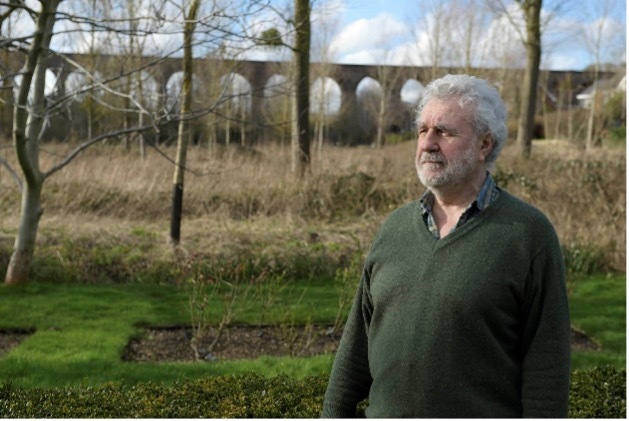PRESS RELEASE
Open to the public 15th June to the 18th August, open Wednesdays and weekends 10.00 - 17.00
This June the East Anglian Railway Museum will be holding a special weekend celebrating the 175thanniversary of the Chappel Viaduct which was completed in 1849. It was built by the Colchester, Stour Valley, Sudbury and Halstead Railway under the direction of railway engineer, Peter Bruff. Bruff was also instrumental in the development of both Clacton on Sea and Walton on the Naze as resorts.
The first train ran across the viaduct on Monday 2nd July. On entering the branch line the engine’s chimney became entangled with the triumphal arch that had been erected, causing the arch to fall onto the engine, which continued to Sudbury adorned with foliage and woodwork. Hopefully no such mishaps will befall the celebration weekend.
As part of the viaduct commemoration, a new exhibition by renowned Chappel-based artist Władysław Mirecki will be staged at the museum Goods Shed between 15th June and 18th August. On display will be Mirecki’s 64 watercolours of the viaduct’s arches. He has painted each of the 32 arches from both east and west perspective, and, seen together in one place, the paintings are breathtaking. It is fortunate that the museum has a space adequate for the exhibiting of the complete set.
Born in Chelmsford of Polish parents, Władysław Mirecki is self-taught and has painted all his life. He painted whilst studying for his science degree at Kingston Polytechnic, London (1975-78); then during his time as an industrial designer and whilst co-proprietor of Chappel Galleries (1986 to the present day).
The viaduct, was built with seven million bricks, making it one of the largest brick-built railway structures in the UK. The Stockport and Ouse Valley viaducts used approximately 11 million. For comparison the Stanley Dock warehouse in Liverpool, the world’s largest brick-built warehouse, now 550 apartments, took 27 million and Battersea Power Station six million.
Sited on the Gainsborough line between Marks Tey and Sudbury the 32-arch structure is just to the south of Chappel and Wakes Colne station where the East Anglian Railway Museum is located. The viaduct was under threat in the 70’s when the government announced that the Marks Tey – Sudbury line would close in 1974 with the viaduct to be demolished. The plan was abandoned in the aftermath of the oil crisis of triggered by the 1973 Arab-Israel Yom Kippur war, which had raised concerns about the future availability of petrol.
In 1967 the viaduct was Grade II listed as being of special interest and in 2002 it became a scheduled monument due to its role in the “stop line” strategy developed to respond in the event of an invasion in 1941. The Historic England listing states,
“the defence line at Chappel Viaduct represents the survival, in a single grouping, of the whole spectrum of defensive structures deployed along the `stop lines'. Examples of all four major pillbox types deployed along the `stop lines' are represented and there is also excellent survival of the complementary defence mechanisms of anti-tank cubes and anti-tank cylinders, as well as two spigot mortar gun emplacements. Of the individual elements of the defence line, several represent exceptional survivals: the FW3/28 artillery pillbox is the last of its type to survive on the Eastern Command Line”.
The 175th anniversary of this exceptional structure presents an opportunity to celebrate its place in history.
Check the museum web-site for details of opening times.
< https://earm.co.uk/events/chappel-viaduct-display/ >
Artist’s Statement
I first came to Chappel in January 1986. I’d abandoned my career as an industrial designer to ‘take up the brush’ and to supplement my income worked three days a week on a manpower services commission scheme at the East Anglian Museum. I slept on site in a sleeping car. At the Thatchers Arms, Mount Bures I was fed by the Landlady, Corrie.
Unbeknown to me, my wife to be, Edna Battye had started Chappel Galleries. In the rooms above, she took lodgers and it was not until late that summer I moved in. It was there I first saw the Viaduct stretched before my eyes that I instantly began to think about painting all it’s arches. It took more than 30 years before my vision was realised.
Władysław Mirecki, April 2024


